Doors are notorious for sound penetration; especially interior doors, which in most homes, are hollow. Noise can also enter through exterior doors, enabling the sounds of dogs barking, road traffic, construction work, and any other noise that’s going on outside of your home to pour inside your home.
If you’re struggling with noise coming in through your interior or exterior doors, you’ll be happy to know that there are ways to soundproof those portals. Below, we discuss some of the most effective ways to prevent unwanted noises from coming in through your doors.
The goal of soundproofing is to prevent the transmission of noise. However, there are different types of noise and knowing the difference between them is important so you can determine which soundproofing methods will be the most effective for your specific needs.
There are two primary kinds of noise:
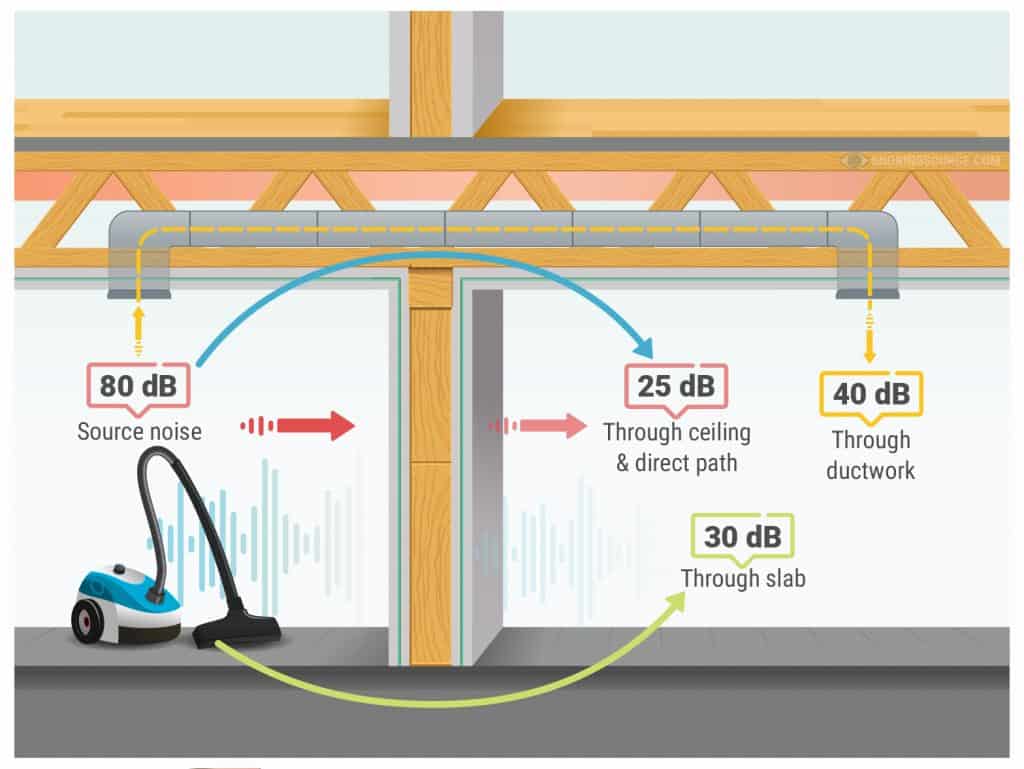
Airborne noise is the most commonly known type of noise; examples include people speaking, sound from a TV or radio, or a barking dog.
Airborne noise occurs when something makes a sound – such as a person speaking – and the soundwaves are picked up by and travel through the air until it reaches a solid object.
Once they reach a solid object, the sound waves collide, and as a result of that collision, the sound is dispersed into the surrounding area.
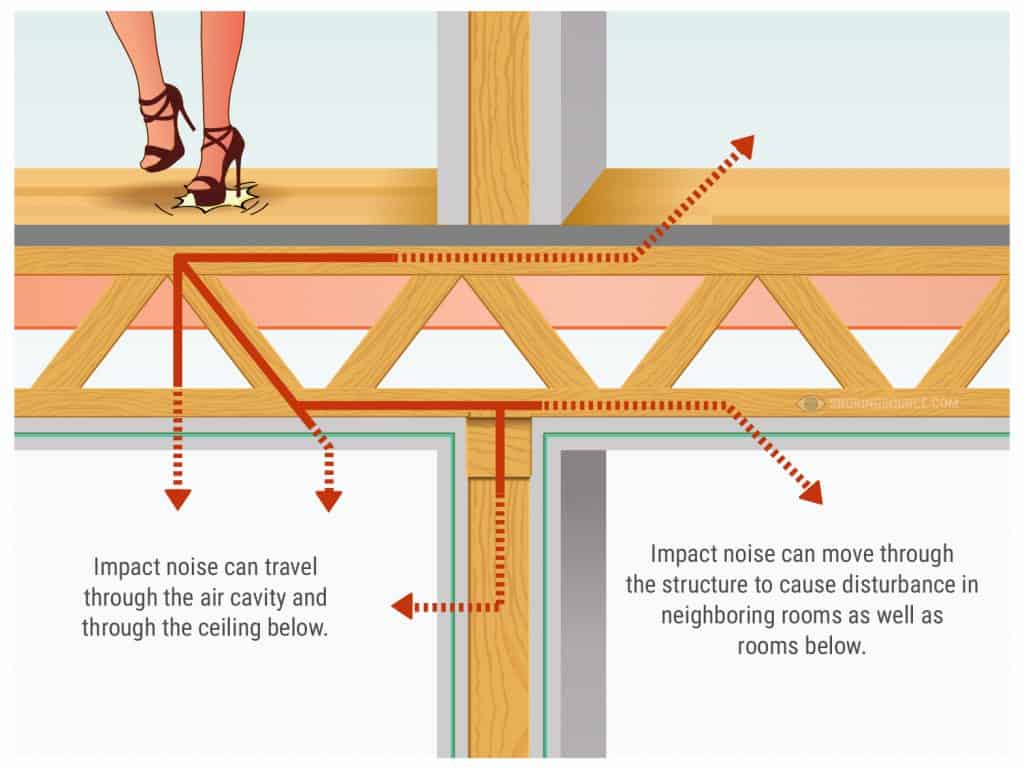
The second type of noise is structure or structure-borne noise. This is noise occurs when soundwaves travel through a structure; a floor or a wall, for example.
It happens when an object makes collides with a structure, the resulting collision makes a sound, and that sound is transferred through the structure into the adjacent area.
Common examples of structure-borne sound include footsteps walking on the floor above you or someone knocking on a wall.
As mentioned, the type of noise is important, as different strategies are required to block out different types of noise. Therefore, before you begin soundproofing your door, you should try to determine which type of noise you are dealing with.
There are several techniques that can be used to soundproof a doorway. Below, we highlight some of the easiest and most effective strategies for minimizing both airborne and structure-borne noise.
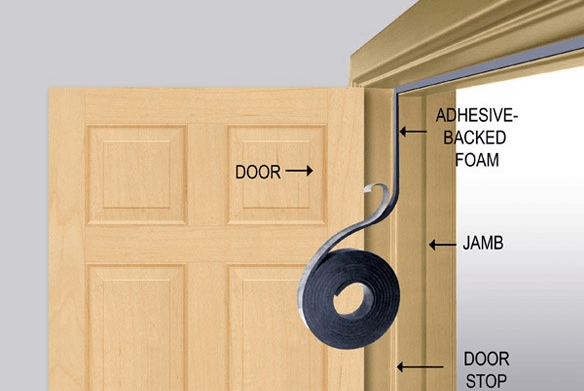
You probably know that weather stripping helps to block out drafts, but did you know that it can also be used to reduce noise?
Weather stripping is applied around the edges of a doorway, thus preventing noise from traveling through the cracks that surround it.
There are several types of weather stripping. For the most secure attachment, we recommend using weather stripping that is designed to be applied with an adhesive; we suggest using green glue (a soundproof adhesive).
Simply apply the glue to the weather stripping and secure it in place. For an easier application, you can use self-adhering weather stripping, which has an adhesive backing already applied to it.
Just remove the piece of paper that covers the sticky part of the material and place it along the bottom of your door. Make sure to cover the entire top of the door, as well as the sides, and remove any excess material.
While both options can prove to be effective, we recommend the first because it tends to offer a more secure attachment and better soundproofing capabilities.
While weather stripping is an effective way to prevent sound from traveling through the cracks around the top and sides of your door, it won’t cover the largest source of noise intrusion in a door: the bottom. For that, you’ll need to use a door sweep.
A door sweep is applied to the bottom of a door, covering the gap between the door and the floor; a fairly large opening that allows a lot of noise to travel through the structure. Door sweeps can be purchased at home improvement stores and from online vendors.
Make sure you measure the bottom of your door before buying so that you purchase the correct size. If you can’t find a door sweep that’s the exact size of the bottom of your door, we suggest going up a size and cutting off any excess. Attaching a door sweep just requires a few screws or durable adhesive.
Alternatively, you could use a slip-on door sweep. As the name suggests, this type of door sweep simply slips onto the bottom of the door.
In addition to blocking out unwanted noise, a door sweep can also help to prevent drafts from flowing underneath the door, minimize heat transfer, and even reduce utility bills.
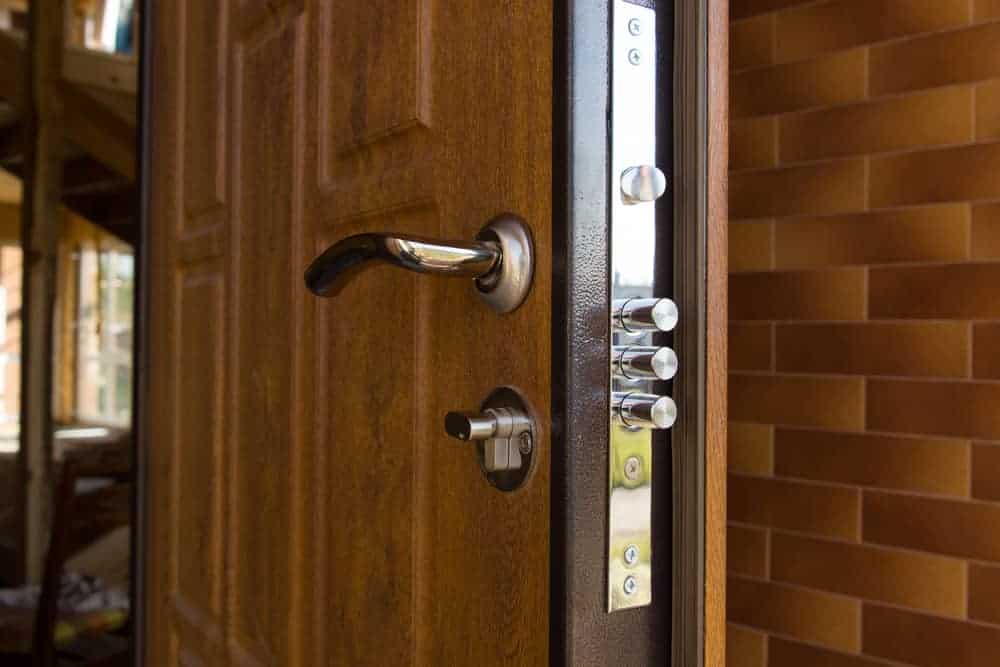
As mentioned, the majority of interior doors are hollow. As such, soundwaves can easily transfer through them, causing an excessive amount of noise to travel from the neighboring room to the room you’re looking to keep quiet.
If you have a hollow door, perhaps the easiest way to soundproof it is simply by replacing it with a solid core door. Before doing so, however, confirm that you do, in fact, have a hollow door.
To determine whether or not you do, knock on the door. If it sounds like there’s an echo going through, it’s hollow; if, however, it sounds like a solid piece of wood and you can’t hear an echo, you have a solid door.
If the door is hollow, switch it out for a solid one.
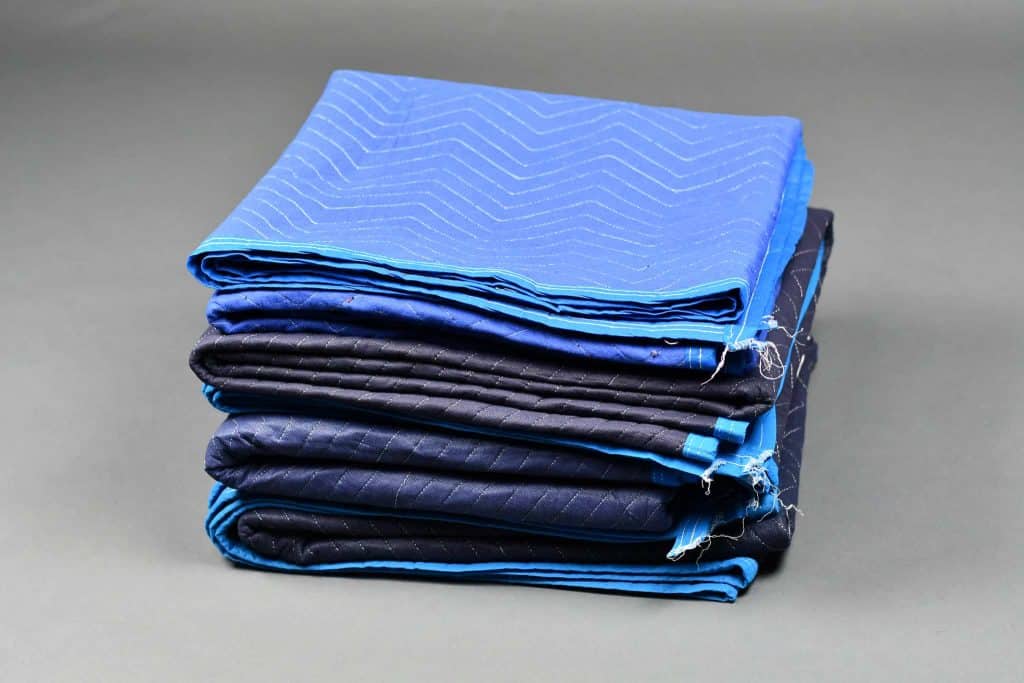
While replacing a hollow door with a solid one can definitely improve soundproofing, it may not provide enough sound blocking for particularly loud spaces. If that’s the case, you could hang up a soundproof blanket.
Soundproof blankets are made out of thick, absorbent materials, thus they help to block the transfer of soundwaves.
To hang a soundproof blanket, simply drape it over one side of the door and secure it in place with nails or adhesive. For even more soundproofing, hang a blanket on both sides of the door.
This is also a viable option if you have a hollow door and you don’t want to replace it with a solid core door.
Cutting down the noise that’s traveling through the door can prove to be a highly effective way to soundproof the portal to a room. After all, the reason why you’re hearing sound coming through the door at all is because it is traveling from the adjacent space.
To cut down sound from the other side of the door, try placing area rugs on hard surfaces, such as tile, laminate, or hardwood. You could also install furniture on either side of the doorway, such as a wall-mounted bookshelf or a tall armoire.
As the sound-waves from outside the door travel, they’ll collide with the furniture, which will help to cut down on the transfer into your room.
Another option is to install soundproofing foam. This foam is dense, thick, and is made of sound-absorbing materials. Attach sheets of soundproofing foam to the front and back of the door using nails or adhesive and you should notice a significant difference in the noise level in your room.
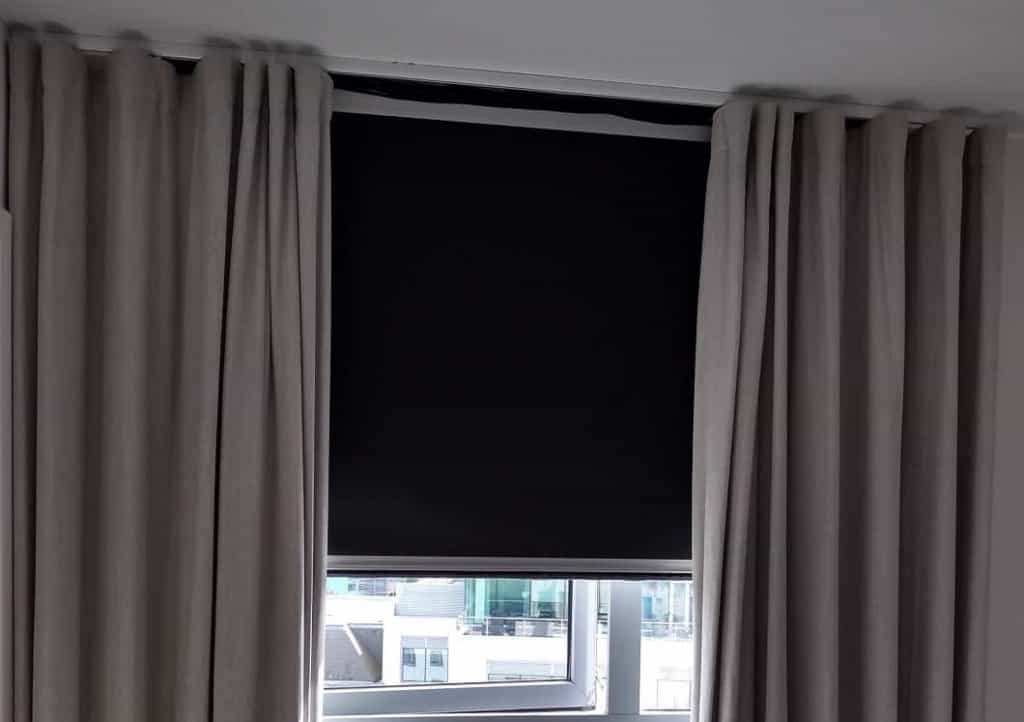
While curtains are usually reserved for windows, they can also be used on doors, and they can prove to be an effective barrier for sound; especially if you purchase specialty soundproofing curtains.
To use soundproof curtains, simply hang a rod over the doorway and drape the curtains from it. You can close the curtains after you close the door to block out sound and open them when you need to get in and out of the room.
Doors are one of the most common sources of noise intrusion. However, you don’t have to deal with that unwanted noise; there are several ways that you can effectively soundproof a doorway.
By employing a combination of the above-mentioned techniques, you can significantly minimize the amount of airborne and structure-borne noise that travels through the doorway of your home so that you can enjoy some peace and quiet on the other side.

Snoringsource.com is a participant in the Amazon Services LLC Associates Program, an affiliate advertising program designed to provide a means for website owners to earn advertising fees by advertising and linking to amazon(.com, .co.uk, .ca etc) and any other website that may be affiliated with Amazon Service LLC Associates Program.